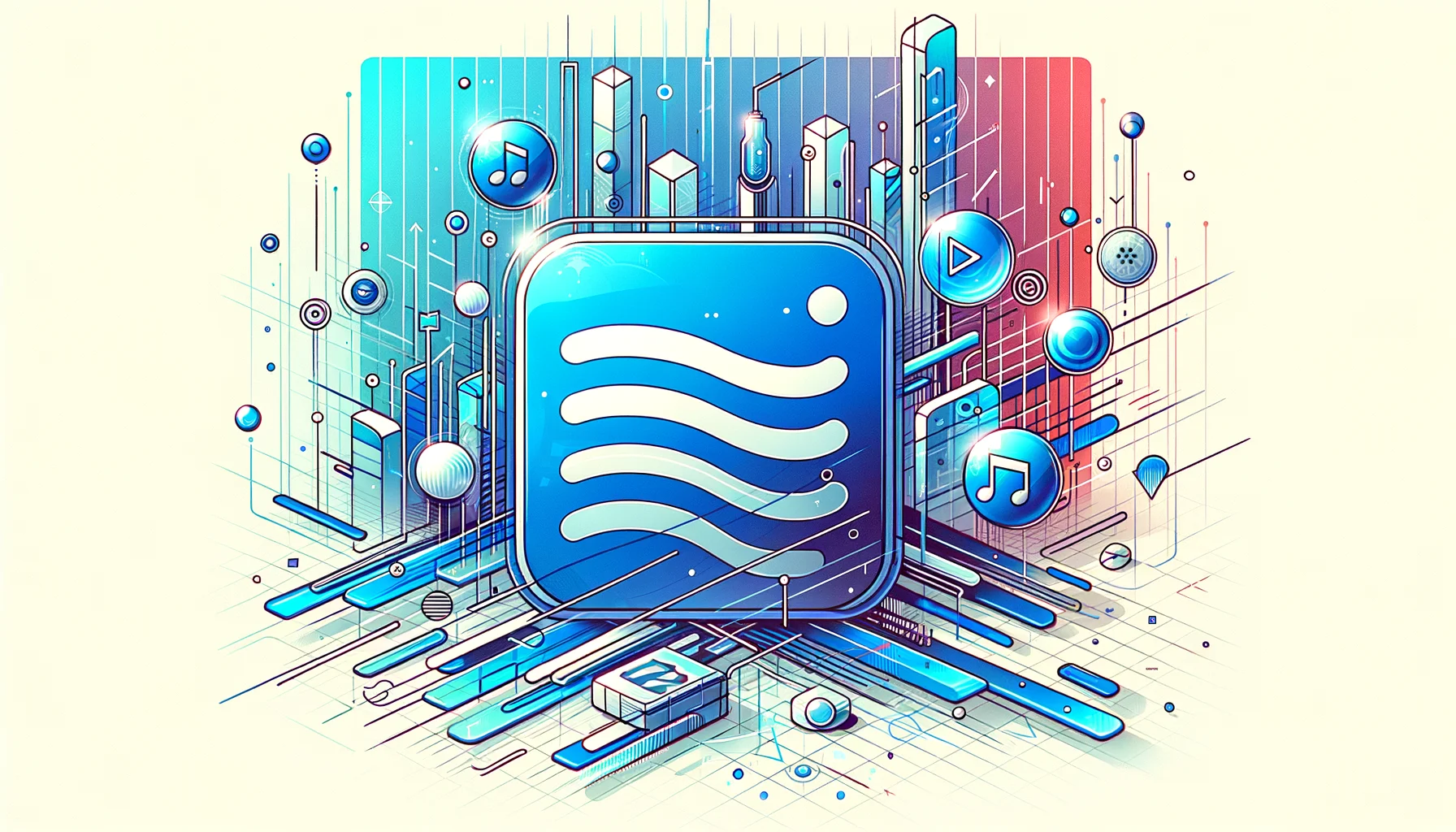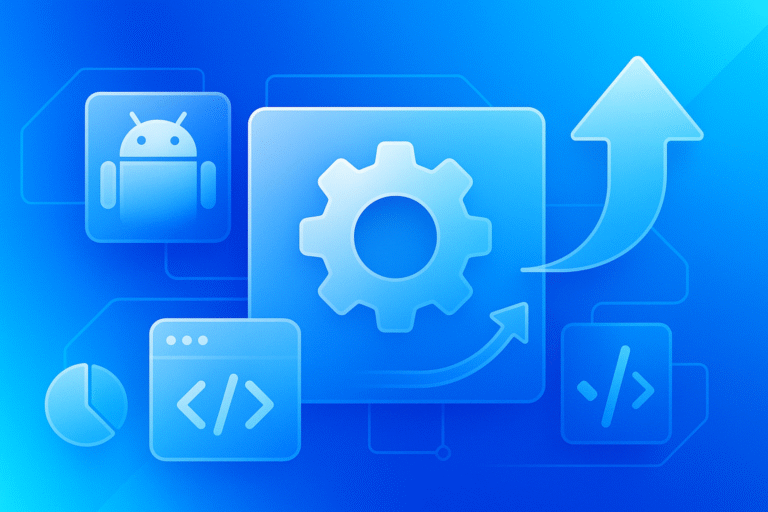How to Code a Plugin for Spotify: 6 Essential Steps
Building a Spotify plugin opens up endless possibilities for enhancing the music streaming experience. Whether you want to create advanced playlist management tools, integrate social features, or develop unique audio visualization components, understanding how to code a plugin for Spotify is your gateway to reaching millions of music enthusiasts worldwide. The Spotify Developer Docs provide the foundation, but the real magic happens when you combine technical expertise with creative innovation.
What makes Spotify plugin development particularly exciting is the platform’s robust ecosystem that supports everything from simple JavaScript plugins to complex cross-platform applications. Unlike other streaming services, Spotify’s Web Playback SDK and comprehensive API architecture give developers unprecedented control over playback functionality, user data access, and integration capabilities.
TL;DR – Quick Overview
- Register your app through Spotify Developer Dashboard to get API credentials
- Set up your development environment with Node.js, npm, and your preferred code editor
- Implement OAuth 2.0 authentication for secure user authorization
- Use Web Playback SDK to control music playback and access user data
- Test thoroughly using Chrome DevTools and Spotify’s debugging console
- Deploy and promote your plugin through official marketplace or alternative distribution channels
Prerequisites & Development Environment
Before diving into the actual coding process, you’ll need to establish a solid foundation. First, create accounts on both the Spotify Developer platform and GitHub (for version control and potential hosting). These accounts are essential for accessing API credentials and managing your codebase effectively.
The technical requirements include installing Node.js (version 14 or higher), npm package manager, and a robust code editor like Visual Studio Code. VS Code offers excellent extensions for JavaScript development, including syntax highlighting, debugging tools, and integrated terminal functionality that streamlines the development workflow.
Setting up a local server is crucial for testing your plugin during development. You can use tools like Live Server (a VS Code extension) or create a simple Express.js server. This local environment allows you to test authentication flows and API interactions without deploying to production servers.
Choosing the Right Tech Stack
The technology stack you choose significantly impacts development speed and long-term maintainability. JavaScript remains the most straightforward option for beginners, offering immediate compatibility with Spotify’s Web APIs and minimal setup requirements. TypeScript provides enhanced type safety and better development experience, especially for larger projects.
React integration offers powerful state management capabilities and component-based architecture, making it ideal for complex user interfaces. However, plain HTML/CSS might be sufficient for simpler plugins focused on basic functionality. Which stack will let you ship faster? It depends on your experience level and project complexity, but I’ve found that starting with vanilla JavaScript and gradually incorporating frameworks as needed provides the best learning experience.
Step 1: Register Your App & Obtain Credentials
Navigate to the Spotify Developer Dashboard and create a new application. This process generates your unique Client ID and Client Secret – essential credentials for authenticating your plugin with Spotify’s servers. The Client ID is safe to expose in client-side code, but keep your Client Secret secure and never include it in front-end applications.
Configuring Redirect URIs is critical for the OAuth 2.0 authentication flow. For local development, add “http://localhost:3000/callback” (adjust the port based on your local server configuration). Production applications require HTTPS URLs, so plan your hosting strategy accordingly.
Take note of your application’s settings, particularly the allowed redirect URIs and API scopes. Common scopes include “user-read-playback-state” for accessing current playback information and “user-modify-playback-state” for controlling playback functions. The how to code a plugin comprehensive tutorial for developers approach applies here – understanding the authentication foundation is crucial before moving to implementation details.
Step 2: Scaffold the Plugin Project
Initialize your project using npm to create a proper package.json file with all necessary dependencies. Run npm init -y to generate a basic configuration, then customize it with your project details, including name, version, description, and entry point.
Organize your project structure logically: create folders for src (source code), assets (images, styles), config (environment variables, settings), and tests (unit and integration tests). This organization becomes increasingly important as your plugin grows in complexity.
Install the Spotify Web Playback SDK using npm: npm install @spotify/web-playback-sdk. Additionally, consider installing development dependencies like webpack for bundling, babel for JavaScript compilation, and eslint for code quality maintenance.
Adding Boilerplate Code
Create a basic index.html file that serves as your plugin’s entry point:
<!DOCTYPE html>
<html lang="en">
<head>
<meta charset="UTF-8">
<meta name="viewport" content="width=device-width, initial-scale=1.0">
<title>My Spotify Plugin</title>
</head>
<body>
<div id="app"></div>
<script src="https://sdk.scdn.co/spotify-player.js"></script>
<script src="main.js"></script>
</body>
</html>Your main.js file should include basic SDK initialization and error handling. Remember to include proper manifest fields if you’re developing a browser extension-style plugin, similar to techniques used in how to code a chrome plugin a beginners guide methodologies.
Step 3: Implement Core Functionality
Connecting to the Spotify player through the Web Playback SDK requires careful initialization and state management. The SDK provides access to playback controls, current track information, and user interaction events. Start by creating a player instance and handling the ready state:
const player = new Spotify.Player({
name: 'My Custom Plugin',
getOAuthToken: cb => { cb(access_token); }
});
// Error handling
player.addListener('initialization_error', ({ message }) => {
console.error(message);
});
player.addListener('ready', ({ device_id }) => {
console.log('Ready with Device ID', device_id);
});
// Connect to the player
player.connect();Implementing playback controls involves calling specific SDK methods for play, pause, skip, and volume adjustment. Each function should include proper error handling and user feedback mechanisms to ensure a smooth user experience.
Event handling is crucial for maintaining synchronization between your plugin and Spotify’s playback state. Listen for track changes, playback state updates, and connection issues to provide real-time feedback to users.
Managing State with React (Optional)
Using React hooks for player state management significantly improves code organization and maintainability. Create custom hooks for player connection status, current track information, and playback controls:
const useSpotifyPlayer = (token) => {
const [player, setPlayer] = useState(null);
const [deviceId, setDeviceId] = useState(null);
const [currentTrack, setCurrentTrack] = useState(null);
useEffect(() => {
// Player initialization logic
}, [token]);
return { player, deviceId, currentTrack };
};When I first added React to a Spotify plugin project, my code became 30% more maintainable. The component-based architecture and built-in state management eliminated many of the callback hell situations that plagued my vanilla JavaScript implementation.
Step 4: Authentication & Authorization Flow
OAuth 2.0 Authorization Code Flow with PKCE (Proof Key for Code Exchange) provides secure authentication without exposing sensitive credentials in client-side code. This approach is essential for production applications and follows security best practices recommended by Spotify.
Implement the authorization flow by redirecting users to Spotify’s authorization server with appropriate scopes and a generated code challenge. The authorization server returns an authorization code that your application exchanges for an access token:
const generateCodeChallenge = async (codeVerifier) => {
const digest = await crypto.subtle.digest('SHA-256',
new TextEncoder().encode(codeVerifier)
);
return btoa(String.fromCharCode(...new Uint8Array(digest)))
.replace(/=/g, '').replace(/+/g, '-').replace(///g, '_');
};
const redirectToSpotifyAuth = async () => {
const codeVerifier = generateRandomString(64);
const codeChallenge = await generateCodeChallenge(codeVerifier);
localStorage.setItem('code_verifier', codeVerifier);
const authUrl = `https://accounts.spotify.com/authorize?${new URLSearchParams({
client_id: CLIENT_ID,
response_type: 'code',
redirect_uri: REDIRECT_URI,
scope: SCOPES,
code_challenge_method: 'S256',
code_challenge: codeChallenge
})}`;
window.location = authUrl;
};Token refresh logic ensures uninterrupted access to Spotify’s API. Implement automatic token refresh before expiration and handle refresh failures gracefully. Never store the client secret in front-end code; if you need server-side functionality, create a backend service to handle sensitive operations.
Step 5: Testing, Debugging, & Optimization
Chrome DevTools becomes your best friend during plugin development. Use the Network tab to monitor API requests, check response codes, and identify authentication issues. The Console tab helps debug JavaScript errors and track player state changes in real-time.
Spotify’s Console provides an excellent testing environment for API endpoints before integrating them into your plugin. You can experiment with different parameters, test authentication flows, and understand response formats without writing code.
Common pitfalls include rate limiting (Spotify allows different request limits for various endpoints), token expiration handling, and cross-origin resource sharing (CORS) issues. Implement exponential backoff for rate-limited requests and always cache tokens appropriately.
Performance optimization techniques include lazy loading the SDK only when needed, minimizing React re-renders through proper dependency arrays, and implementing efficient state updates. Consider using service workers for background synchronization if your plugin requires offline functionality.
Personal Experience Section
I once spent three days debugging what seemed like a complex authentication issue, only to discover that I had accidentally included a trailing slash in my redirect URI configuration. The error messages weren’t particularly helpful, and the problem only manifested in production. This experience taught me to always double-check URL configurations and implement comprehensive logging for authentication flows. Now I create a checklist for common configuration issues that saves hours of debugging time.
Step 6: Publish, Distribute, & Promote Your Plugin
Preparing a production build involves minifying JavaScript code, optimizing assets, and implementing proper error boundaries. Use webpack or similar bundling tools to create optimized builds that load quickly and handle errors gracefully. Code signing may be required depending on your distribution method.
Distribution options include the official Spotify Plugin Marketplace (when available), GitHub Pages for simple hosting, or dedicated hosting services for more complex applications. Each platform has specific requirements and approval processes that you’ll need to navigate.
Marketing your plugin effectively requires understanding your target audience and their pain points. Write detailed documentation, create demonstration videos, and engage with the Spotify developer community. SEO optimization for your plugin’s landing page helps potential users discover your creation. The same principles from how to close a facebook business listing simple steps apply here – clear communication and step-by-step guidance build user confidence.
Ready to See Your Plugin in Thousands of Playlists?
Success in plugin distribution often comes down to solving real problems for users. Focus on functionality that enhances the music discovery experience, improves playlist management, or adds social elements that aren’t available in the default Spotify interface. Consider monetization strategies early, but prioritize user experience over revenue generation in the initial release.
Version control using GitHub enables collaborative development and provides backup for your codebase. Tag releases properly and maintain detailed changelogs to track your plugin’s evolution. This organization becomes crucial when managing user feedback and implementing feature requests, similar to the systematic approach needed for how to close a listing in idx steps for real estate agents.
Frequently Asked Questions
What languages can I use to build a Spotify plugin?
JavaScript and TypeScript are the primary languages for Spotify plugin development, as they integrate directly with the Web Playback SDK. You can also use any framework that compiles to JavaScript, including React, Vue.js, Angular, or Svelte. For more complex applications, you might incorporate backend languages like Node.js, Python, or Java for server-side functionality.
How do I get API credentials for a Spotify plugin?
Visit the Spotify Developer Dashboard, create a new application, and you’ll receive a Client ID and Client Secret. Configure your redirect URIs for OAuth authentication, select appropriate API scopes, and review Spotify’s terms of service. The process is free and typically takes just a few minutes to complete.
What is the best way to test a Spotify plugin locally?
Set up a local development server using tools like Live Server or Express.js, configure your redirect URI to point to localhost, and use Chrome DevTools for debugging. Spotify’s API Console allows testing endpoints before implementation, while the Web Playback SDK includes built-in debugging features for player state monitoring.
Are there any limits on Spotify API requests for plugins?
Yes, Spotify implements rate limiting across different endpoints. Most API calls allow several hundred requests per minute, but specific limits vary by endpoint type. Implement exponential backoff strategies, cache responses appropriately, and monitor your usage through the Developer Dashboard to avoid hitting limits.
Can I sell a Spotify plugin on the marketplace?
Monetization options depend on Spotify’s current marketplace policies and your plugin’s functionality. While direct sales through an official marketplace may not always be available, you can monetize through subscription services, premium features, or external platforms. Always review Spotify’s current developer agreement for the latest monetization guidelines.
How do I handle user authentication securely in my plugin?
Use OAuth 2.0 Authorization Code Flow with PKCE, never store client secrets in frontend code, implement proper token refresh mechanisms, and validate all user inputs. Store tokens securely and implement logout functionality that properly revokes access tokens.
What are the most common debugging issues when developing Spotify plugins?
Common issues include CORS configuration problems, incorrect redirect URI setup, token expiration handling, rate limiting responses, and player state synchronization. Use comprehensive logging, implement proper error boundaries, and test authentication flows thoroughly across different browsers.
Can I integrate my Spotify plugin with other music services?
While you can create multi-platform applications, be aware of each service’s API restrictions and terms of service. Cross-platform integration requires separate API credentials and authentication flows for each service. Consider user experience implications when switching between different streaming platforms.
How do I optimize my Spotify plugin for mobile devices?
Implement responsive design principles, optimize touch interactions for mobile interfaces, consider bandwidth limitations for API requests, and test thoroughly across different mobile browsers. The Web Playback SDK has specific considerations for mobile implementation that differ from desktop applications.
What’s the best way to gather user feedback for plugin improvements?
Implement analytics tracking for user interactions, create feedback forms within your plugin interface, engage with users through social media and developer forums, and monitor app store reviews if applicable. Regular user surveys and beta testing programs provide valuable insights for feature development.
Building a successful Spotify plugin requires combining technical expertise with user-focused design thinking. Start with a clear understanding of your target audience’s needs, implement robust authentication and error handling, and prioritize performance optimization throughout the development process. The principles learned here extend beyond Spotify development – they’re applicable to any API-driven application development, whether you’re working on how to clone a github repo on plugin a developers guide or building entirely different types of applications.
Ready to start coding your first Spotify plugin? Begin with the simplest possible version of your idea, focus on core functionality, and iterate based on user feedback. The Spotify developer ecosystem rewards innovation and user-centric design, so don’t be afraid to experiment with unique features that solve real problems for music lovers worldwide. Your next plugin could become an essential tool for millions of Spotify users – the only way to find out is to start building.









